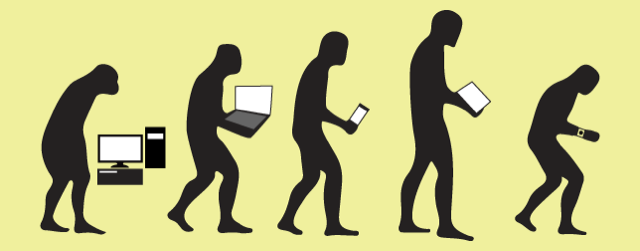In 2016, the phrase “Wearable Technology „ is becoming familiar to the public at large. We are now bombarded with many fitness trackers, smart watches, and smart glasses and so on. However, wearables have been on the market for a while… so when was the first device on the market? Let’s follow the trace of frist class wearables with WT | Wearable Technologies.
At CES 2016, VINCI Smart Hearable was announced as the world’s first smart hearable with a wireless and hands-free smart music player. However, on the timeline of wearable music player, do you know what and when the first wearable music player was invented? A portable music player that rocked the music industry and changed the way people experienced music. Did I hear iPod? Actually it is The Sony Walkman; the first portable cassette tape player from Sony. Sony Walkman was on sale since 1979.
It is so interesting that it has taken a traditional fashion brand like Ralph Lauren to step into smart clothing at the moment. Nevertheless, you may not know, but beginning in 1998 Clothing Plus from Finland launched the world’s first heart rate sensing shirt. They followed up on that in 2002 with a textile heart rate strap and have worked with Adidas, Salomon and Garmin. They have also been a long time exhibitor at WT | Events.
The Apple Watch is obviously leading the smart watches market although they did not invent this idea. Tech giants have been working to get smartwatches perfect for more than a decade. In 2001, IBM Research and Citizen Watch got there first with a smart watch called WatchPad. WatchPad crossed all platform from large enterprise servers to medium-sized and small servers, desktop systems, laptops and the smallest intelligent devices. The watch featured an LCD screen, Bluetooth and an accelerometer. Additionally, it ran on Linux version 2.4. However, the battery life of WatchPad only lasts for a few hours.
Looking back on 2012 when Google announced their Google Glass. Google Glass, at that time, came with a tiny screen at the upper right corner of your field of vision. The screen displays notifications, contents from the web and also runs a native app often referred to as Glassware. However, no one wanted to walk around looking like a computer (or a rich snobby techie). There was also much buzz about the concerns of privacy to the people that the Google Glass camera wa looking at. THe cherry on top of the porrly designed banana split was their poor sales proposition, Google stopped selling their glasses and prepared for a new approach.
Wearable Technology has a fascinating past. The idea of wearable technology is in no way a new one, but we’re finally arriving at the point where years of research and development is paying dividends. The future of wearable technology is coming with endless possibilities and surprises.












